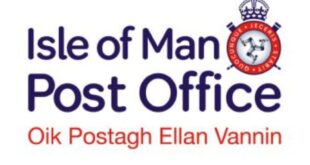Reform is needed to ensure our electoral system continues to deliver secure, trusted and accurate outcomes, writes the chief executive of the Association of Electoral Administrators.
What a snap election that was.
Peter Stanyon, chief executive of the Association of Electoral Administrators
Announced only 20 days after the 2 May local elections across England and Wales, it seems little thought was given to the intense pressure this would immediately put on election professionals and their supporting supply chain – printers, software providers and the Royal Mail.
So, what was it like for returning officers and their teams? Beyond tough.
Six weeks may seem a long time for the politics of an election campaign to play out, but to those tasked with delivering the polls, it’s a blink of an eye. Six weeks from a standing start, to deliver one of the most complex projects in local government. With no option but to deliver, despite the odds.
As reported by LGC on the eve of polling, election staff faced more vitriol from electors than ever before. They delivered the “toughest election yet”, with a tangible rise in the verbal abuse of frontline staff. That is simply not acceptable.
I commented then that electoral staff were “taking the brunt of all the issues”, that “the public tend to not be particularly understanding at election time”, and this issue “had been getting steadily worse for a number of years”. In the week following the election, all those statements stand true.
Changing voter expectations
In the interests of balance, it must be said there were many examples of understanding and sympathy from members of the public. For those, electoral staff are incredibly grateful.
But voter expectations have changed rapidly in recent years. They often expect a swift response from online transactions. You can now apply for a postal vote online, but it’s not next day delivery, only arriving in the final few weeks before polling day. It’s how the system works, but explaining this is tough.
Postal voting became the primary focus of attention the week before polling day. Later than planned deliveries in some areas, for varying reasons, became the story. What wasn’t necessarily reflected are the legal constraints returning officers are bound by, limiting the extent and timing of the help they can offer. Or the work that went on behind the scenes to make sure everything that could be done, was.
This wasn’t helped by uninformed public commentary and an unfortunate case of misinformation from a government source.
Areas of concern
The sign of a well-run election is that politics alone makes the headlines. In the week before polling, we came dangerously close to ‘postal voting chaos’ becoming the story.
Electoral administrators want to help people vote – putting their own lives on hold during the election timetable to do so. They don’t want to put barriers in the way. It makes unfounded accusations of incompetence or being uncaring harder to bear.
As an association we have long argued for a review of the entire election process. Areas of concern include:
- ‘Agile’ application portals that are still not as efficient as they should be. Despite sterling progress by the Government Digital Service, iterative development continues to cause delays and frustration for administrators.
- Massive reliance on a small number of printers, who are just as frustrated by timescales as administrators are.
- Strain placed on the Royal Mail being expected to deliver poll cards, postal votes and candidate mailings over a short period, while also collecting and returning postal votes in tight timescales.
As we reached polling day and then the declarations, the story went back to the politics. Electoral administrators are once again consigned to the shadows. In many cases breathing a collective sigh of relief.
Change is needed
As the first high turnout national election since 2019, this election reaffirmed that elections need to be a key corporate priority. A whole council approach is needed more than ever to support small core teams, both in the lead up to polling day and with post-polls work.
Expertise across services was utilised to the full in many local authorities, helping to deliver what is arguably the biggest project most councils support. It’s how all major elections should be run.
Regardless of issues, regardless of the short timescales, regardless of the pressure returning officers, electoral registration officers and their teams operated under, this election was successfully delivered. Everyone involved should be proud, even as they start preparing for the annual registration canvass in GB, and their next scheduled polls.
But change is needed. To address voters’ expectations. To support those who administer the process. But most of all, the ensure our electoral system, originally designed in Victorian times, continues to deliver secure, trusted and accurate outcomes.
Peter Stanyon, chief executive, Association of Electoral Administrators
Source link



